By | July 13, 2017 07:11am ET
-

Credit: John Sonntag/NASA
A Frosty Rift
-

Credit: Copernicus Sentinel 2017/ESA under CC BY-SA 3.0 IGO
Larsen C Breaks Off
The European Space Agency’s two Sentinel-1 satellites have kept an eye on this rift since it first began to grow in January 2016. Before then, the crack had existed for years, but it appeared to be in a stable state. However, over the course of the last 18 months, the crack lengthened at an alarming rate — from 10 to 13 miles per month. When the crack finally reached the ocean, an iceberg the size of Delaware broke off of the Larsen C ice shelf.NEXT: Larsen C Crack Interferogram
-

Credit: Copernicus Sentinel 2017/A. Hogg/CPOM/Priestly Centre under CC BY-SA 3.0 IGO
Larsen C Crack Interferogram
This interferogram combines two Sentinel-1 radar images from April 2017 and shows the growing crack in Antarctica’s Larsen C ice shelf. “We can measure the iceberg crack propagation much more accurately when using the precise surface deformation information from an interferogram like this, rather than the amplitude — or black and white — image alone where the crack may not always be visible,” European Space Agency polar scientist Anna Hogg said in a statement .NEXT: A Deep Crack
-

Credit: University of Edinburgh
A Deep Crack
The European Space Agency’s CryoSat mission measured the depth of the crack in the Larsen C ice shelf using a radar altimeter. It found that the crack was approximately one-third of a mile (or half a kilometer) deep.NEXT: MODIS View
-

Credit: Joshua Stevens/MODIS/NASA Earth Observatory
MODIS View
NASA’s Aqua satellite acquired this image of the new iceberg on July 12, 2017, using an instrument called the Moderate Resolution Imaging Spectroradiometer (MODIS). The instrument created the false-color view by measuring infrared signals known as “brightness temperature,” which is useful for distinguishing relative warmth or coolness. Dark blue depicts where the surface is the warmest. Lighter blue colors show thicker, cooler parts of the ice sheet.NEXT: An Aerial View
-

Credit: John Sonntag/NASA
An Aerial View
NASA scientist John Sonntag snapped photos of the rift on November 10, 2016, from NASA’s DC-8 research aircraft. When Sonntag photographed the crack, it was about 109 miles (175 kilometers) long. More recent measurements put the rift at 124 miles (200 km) long, with the iceberg barely hanging on; it was only 3 miles (5 km) away from breaking loose.NEXT: Larsen Ice Shelf in 2016
-

Credit: NASA
Larsen Ice Shelf in 2016
-

Credit: Contains modified Copernicus Sentinel data (2017), processed by ESA, CC BY-SA 3.0 IGO
Ice Crack Seen by Sentinel-2A
The crack in Antarctica’s Larsen C ice shelf was also being imaged by the Copernicus Sentinel-2A satellite. This image from April 2017 shows the crack running parallel to the Weddell Sea.NEXT: The Larsen Ice Shelf
-

Credit: NASA
Larsen Ice Shelf
-

Credit: ESA/ATG medialab
Sentinel-1
Sentinel-1 is the first in the family of Copernicus satellites launched by the European Space Agency. Two Sentinel-1 satellites have monitored the crack in the Larsen C ice shelf in the years leading up to the big split. They are also used to monitor Earth’s environment, mapping sea ice and observing changes in land surfaces.NEXT: CryoSat
-

Credit: ESA/AOES Medialab
CryoSat
The Earth Explorer CryoSat mission monitors changes in the thickness of marine ice floating in the polar oceans as well as the ice sheets of Greenland and Antarctica.NEXT: CryoSat Reveals Iceberg
-

Credit: ESA/AOES Medialab
CryoSat Reveals Iceberg
ESA’s CryoSat mission measured the thickness of the eventual iceberg. On average, it is 620 feet (190 meters) thick, but at its thickest point, it has a keel that’s 690 feet (210 m) below the ocean surface. It contains about 277 cubic miles (1,155 cubic kilometers) of ice. [Antarctica’s Larsen C Iceberg Will Tower 600 Feet Over the Ocean ]NEXT: Larsen Crack Opens Up
-

Credit: Copernicus Sentinel 2017/ESA under CC BY-SA 3.0 IGO
Larsen Crack Opens Up
This animation shows how the crack in the Larsen C ice shelf grew from January 2016 to January 2017. Carrying a radar instrument that can “see” through the dark, the Sentinel-1 satellites continuously monitored the growing crack. [Video: Antarctica’s Growing Ice Shelf Crack Monitored from Space ]NEXT: Monitoring the Rift
-

Credit: Copernicus Sentinel 2016-17/Swansea University
Monitoring the Rift
This animation shows how the rift in the Larsen C ice sheet has grown over the last 13 months. Scientists from Project MIDAS, an Antarctic research consortium led by Swansea University in the United Kingdom, used radar images from the Sentinel-1 mission to keep tabs on the situation.NEXT: Aqua Satellite View
-

Credit: NASA Worldview
Aqua Satellite View
Thermal image of the large iceberg that calved off the Larsen C ice shelf. Darker colors indicate where the ice is colder, and brighter colors are warmer. The rift appears as a thin line of slightly warmer area. NASA’s Aqua satellite captured this image on July 12, 2017.NEXT: Landsat 8 View
-

Credit: NASA Earth Observatory
Landsat 8 View
On June 17, 2017, the Thermal Infrared Sensor (TIRS) on NASA’s Landsat 8 captured this false-color image of the crack in the Larsen C ice shelf. Orange depicts where the surface is the warmest, while light blues and whites are the coldest areas.NEXT: A Closer Look
-

Credit: NASA’s Earth Observatory
A Closer Look
In this zoomed-in view of the thermal image taken by the Landsat 8 satellite, the blue hue of the crack indicates that relatively warm ocean water is not far below the surface of the ice shelf.NEXT: A Decade of Growth
-

Credit: NASA/USGS Landsat
A Decade of Growth
This animation shows the growth of the crack in the Larsen C ice shelf from 2006 to 2017, as seen from Landsat satellites.
of 19
of 19
of 19
of 19
of 19
of 19
of 19
of 19
of 19
of 19
of 19
of 19
of 19
of 19
of 19
of 19
of 19
of 19
of 19
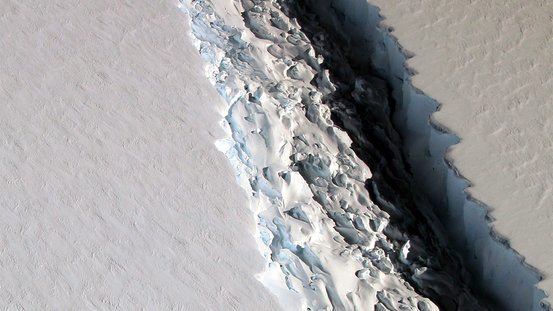
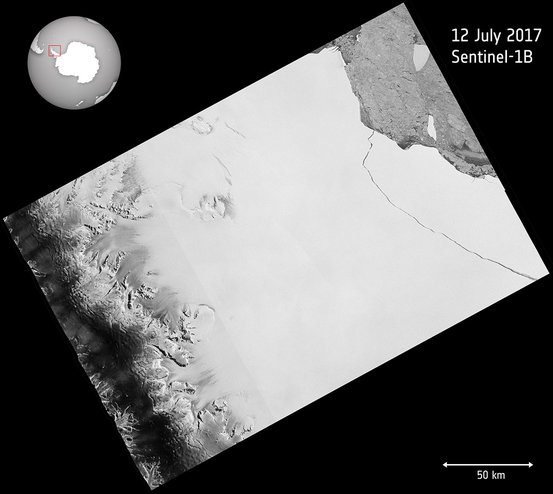
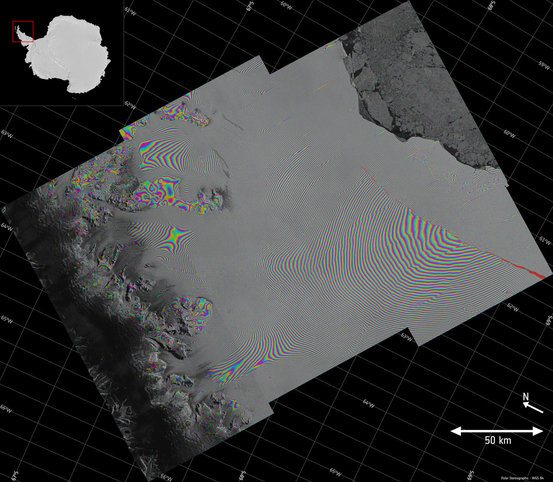
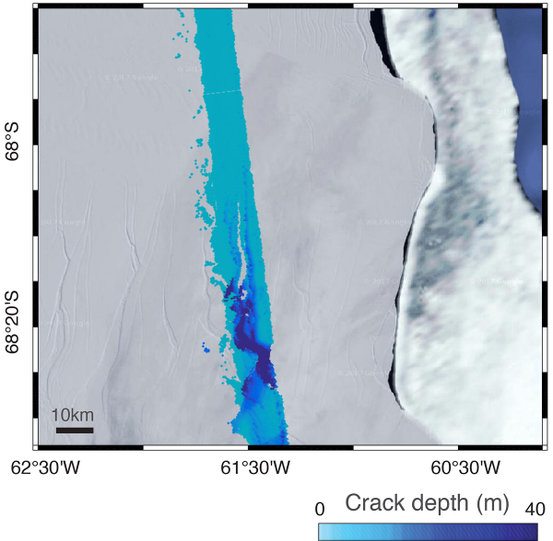
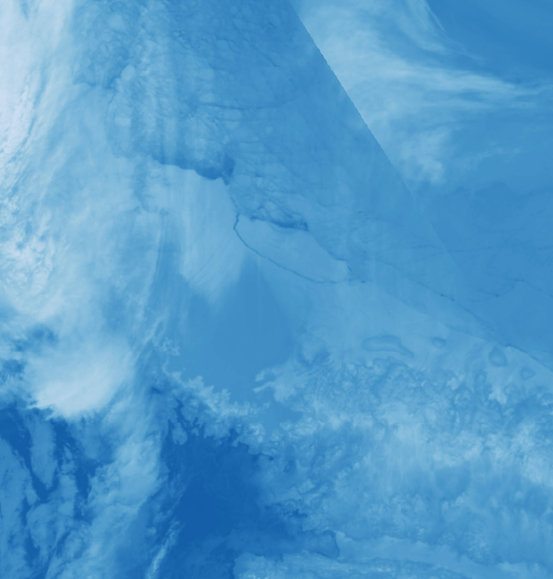
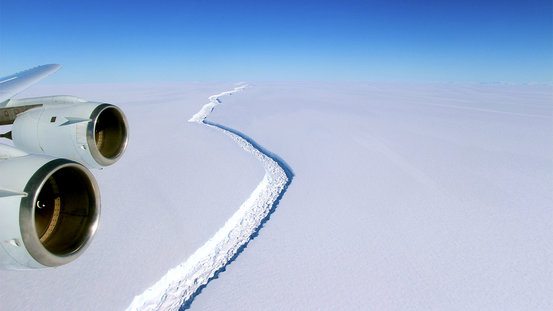
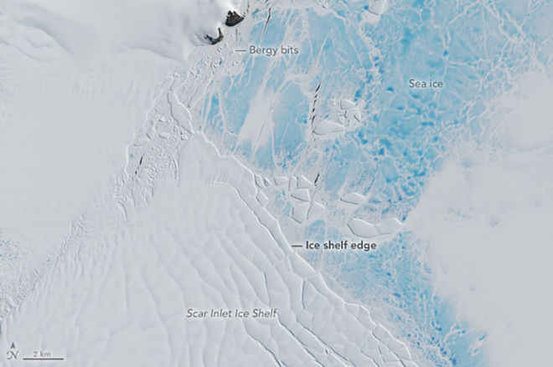
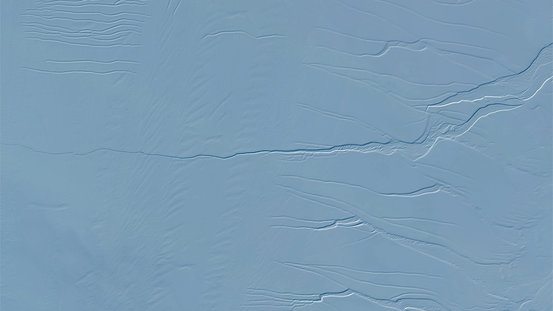
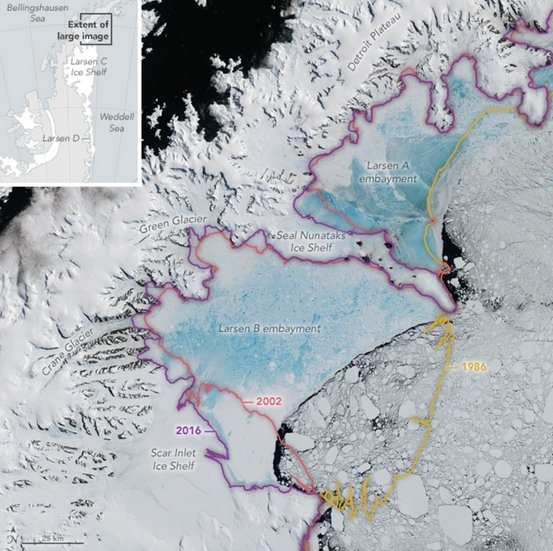
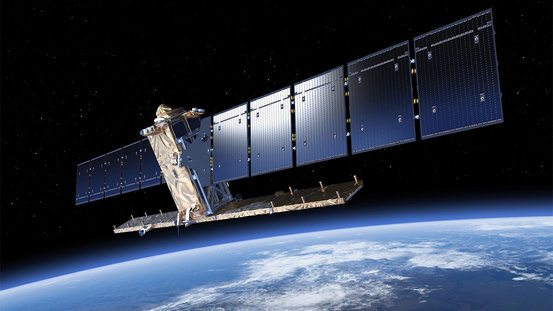
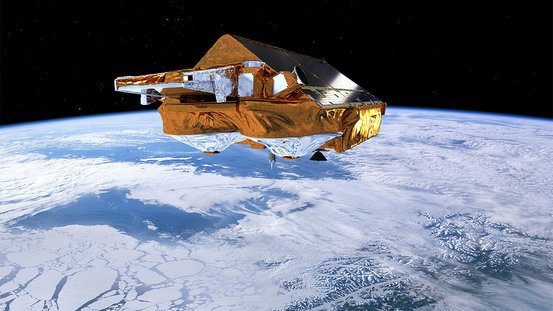
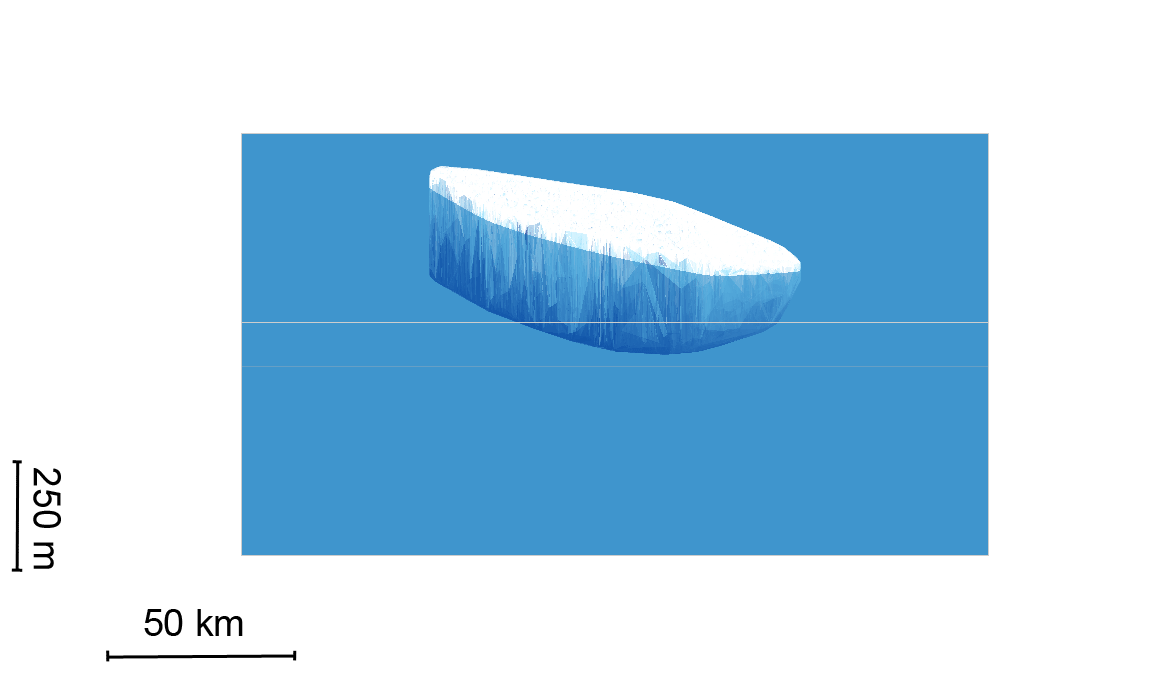
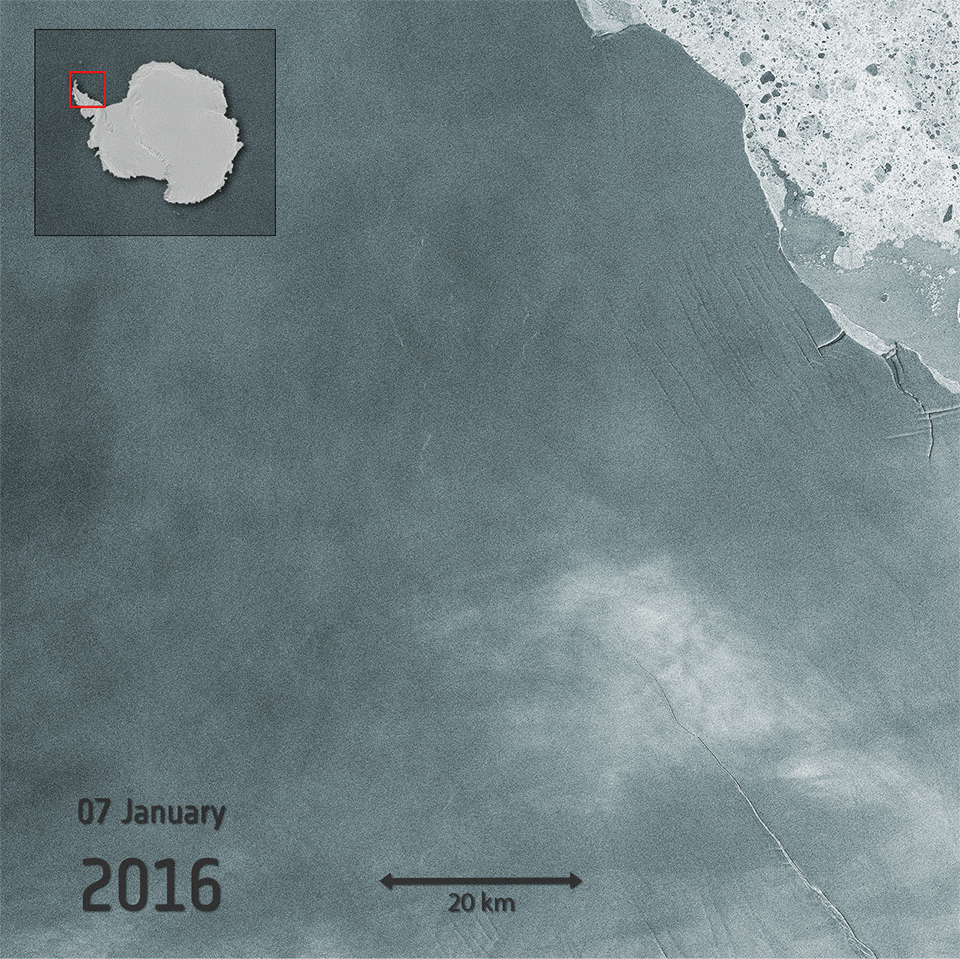
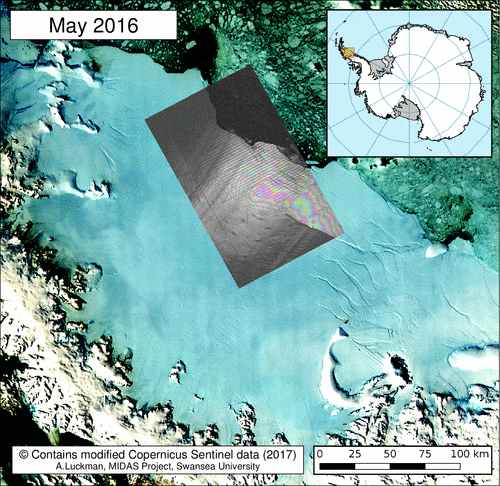
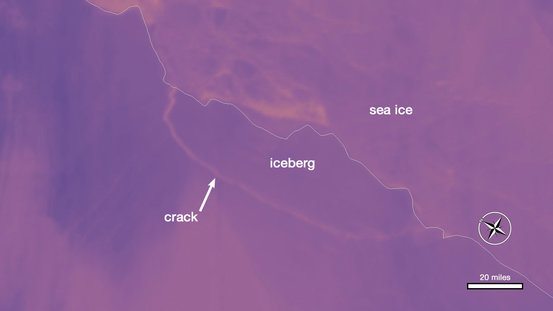
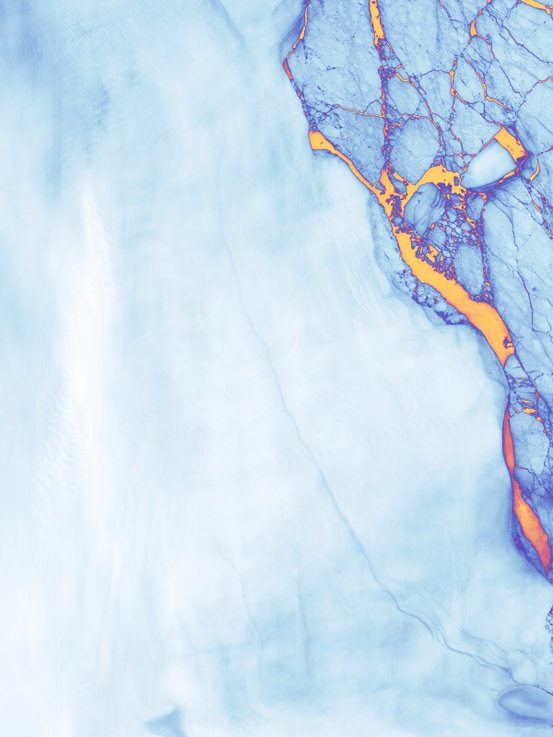
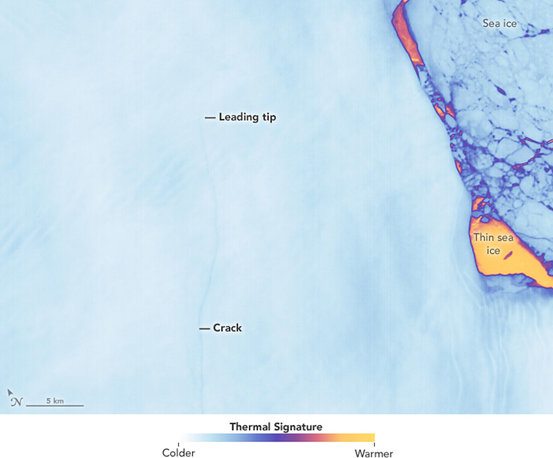
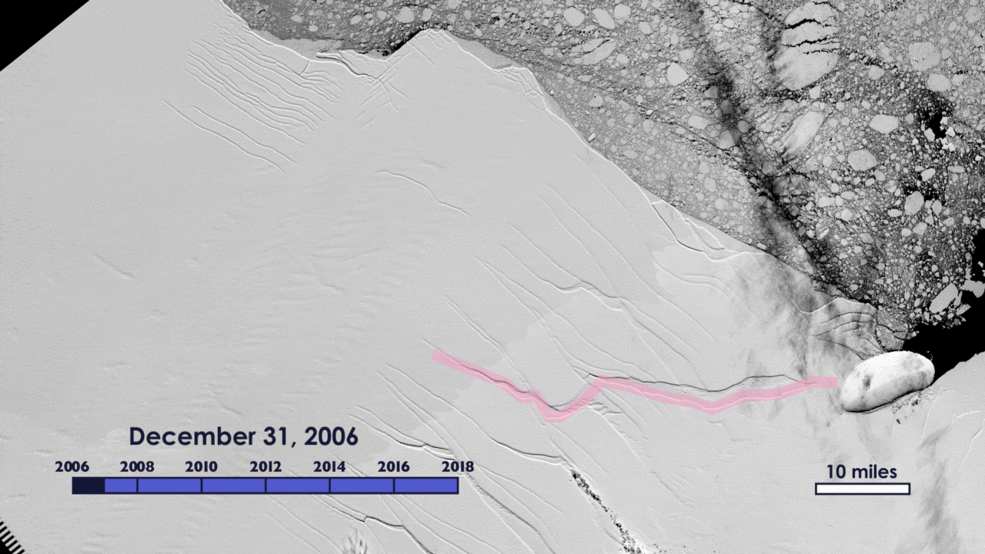
Comments are closed.